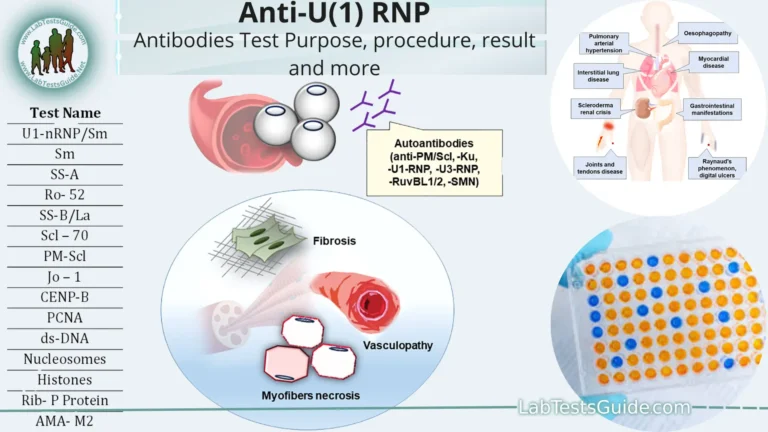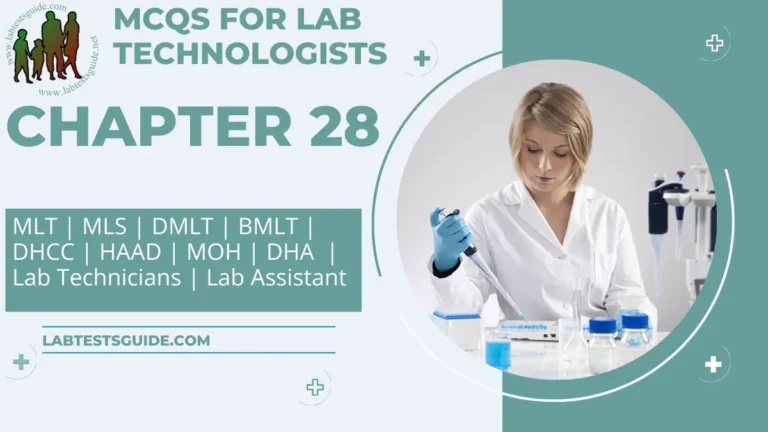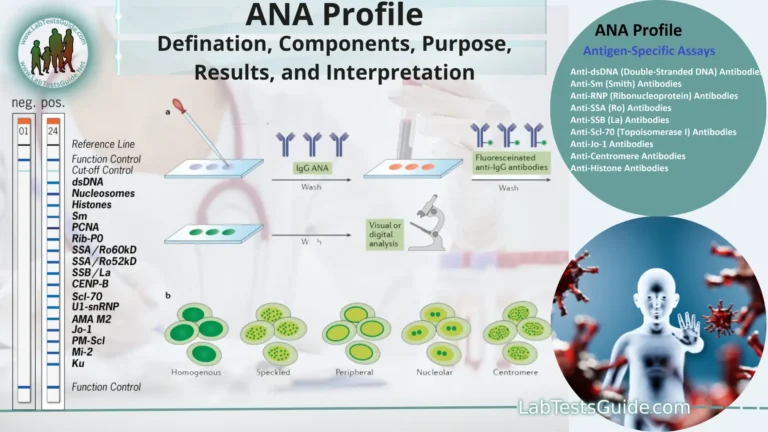4751 to 4800 MCQs for Lab Technician and Technologist Exam Preparation
5000 Plus MCQs for Lab Technician and Technologists are designed to test the knowledge and proficiency of laboratory professionals who work in the field of clinical laboratory science. These questions cover a wide range of topics related to laboratory science, including anatomy, physiology, microbiology, chemistry, and hematology.

If You like then share this to your friends and other social media.
If You have any question and suggestions then please Contact us Here
Questions 4751 to 4800
- Our body can get pentoses from
- Glycolytic pathway
- Uromic acid pathway
- TCA cycle
- HMP shunt✔
- Conversion of glucose to glucose-6- phosphate in human liver is by
- Hexokinase only
- Glucokinase only
- Hexokinase and glucokinase✔
- Glucose-6-phosphate dehydrogenase
- The following is an enzyme required for glycolysis:
- Pyruvate kinase✔
- Pyruvate carboxylase
- Glucose-6-phosphatose
- Glycerokinase
- The normal glucose tolerance curve reaches peak is
- 15 min
- 1 hr✔
- 2 hrs
- 2 ½ hrs
- Oxidative decarboxylation of pyruvate requires
- NADP+
- Cytichromes
- pyridoxal phosphate
- COASH✔
- Glucose tolerance is increased in
- Diabetes mellitus
- Adrenalectomy✔
- Acromegaly
- Thyrotoxicosis
- Glucose tolerance is decreased in
- Diabetes mellitus✔
- Hypopituitarisme
- Addison’s disease
- Hypothyroidism
- During glycolysis, Fructose 1, 6 diphosphate is decomposed by the enzyme:
- Enolase a
- Fructokinase
- Aldolase✔
- Diphosphofructophosphatose
- The following enzyme is required for the hexose monophosphate shunt pathway:
- Glucose-6-phosphatase
- Phosphorylase
- Aldolase
- Glucose-6-phosphate dehydrogenase✔
- Dehydrogenase enzymes of the hexose monophosphate shunt are
- NAD+ specific
- NADP+ specific✔
- FAD specific
- FMN specific
- Under anaerobic conditions the glycolysis of one mole of glucose yields ______moles of ATP.
- One
- Two✔
- Eight
- Thirty
- Glycogen is converted to glucose-1- phosphate by
- UDPG transferase
- Branching enzyme
- Phosphorylase✔
- Phosphatase
- Which of the following is not an enzyme involved in glycolysis?
- Euolase
- Aldolose
- Hexokinase
- Glucose oxidase✔
- Tricarboxylic acid cycle to be continuous requires the regeneration of
- Pyruvic acid
- oxaloacetic acid✔
- α-oxoglutaric acid
- Malic acid
- Dehydrogenation of succinic acid to fumaric acid requires the following hydrogen carrier:
- NAD+
- NADP+
- flavoprotein✔
- Glutathione
- The tissues with the highest total glycogen content are
- Muscle and kidneys
- Kidneys and liver
- Liver and muscle✔
- Brain and Liver
- Rothera test is not given by
- β-hydroxy butyrate
- bile salts✔
- Glucose
- None of these
- Gluconeogenesis is increased in the following condition:
- Diabetes insipidus
- Diabetes Mellitus✔
- Hypothyroidism
- Liver diseases
- The oxidation of lactic acid to pyruvic acidrequires the following vitamin derivative as the hydrogen carrier.
- Lithium pyrophosphate
- Coenyzme A
- NAD+✔
- FMN
- Physiological glycosuria is met with in
- Renal glycosuria
- Alimentary glycosuria✔
- Diabetes Mellitus
- Alloxan diabetes
- Two examples of substrate level phosphorylation in EM pathway of glucose metabolism are in the reactions of
- 1,3 bisphosphoglycerate and phosphoenol pyruvate✔
- Glucose-6 phosphate and Fructo-6-phosphate
- 3 phosphoglyceraldehyde and phosphoenolpyruvate
- 1,3 diphosphoglycerate and 2-phosphoglycerate
- The number of molecules of ATP produced by the total oxidation of acetyl CoA in TCA cycle is
- 6
- 8
- 10✔
- 12
- Substrate level phosphorylation in TCA cycle is in step:
- Isocitrate dehydrogenase
- Malate dehydrogenase
- Aconitase
- Succinate thiokinase✔
- Fatty acids cannot be converted into carbohydrates in the body as the following reaction is not possible.
- Conversion of glucose-6-phosphate into glucose
- Fructose 1,6-bisphosphate to fructose-6- phosphate
- Transformation of acetyl CoA to pyruvate✔
- Formation of acetyl CoA from fatty acids
- Tissues form lactic acid from glucose. This phenomenon is termed as
- Aerobic glycolysis
- Oxidation
- Oxidative phosphorylation
- Anaerobic glycolysis✔
- One molecule of glucose gives __ molecules of CO2 in EM-TCA cycle.
- 6✔
- 3
- 1
- 2
- One molecule of glucose gives __ molecules of CO2 in one round of HMP shunt.
- 6
- 1✔
- 2
- 3
- The 4 rate limiting enzymes of gluconeogenesis are
- Glucokinase, Pyruvate carboxylae phosphoenol pyruvate carboxykinase and glucose-6-phosphatase
- Pyruvate carboxylase, phosphoenol pyruvate carboxykinase, fructose1,6 diphosphatase and glucose-6-phosphatase✔
- Pyruvate kinase, pyruvate carboxylase, phosphoenol pyruvate carboxykinase and glucose-6-phosphatase
- Phospho fructokinase, pyruvate carboxylase, phosphoenol pyruvate carboxykinase and fructose 1, 6 diphosphatase
- For glycogenesis, Glucose should be converted to
- Glucuronic acid
- Pyruvic acid
- UDP glucose✔
- Sorbitol
- Fluoride inhibits __ and arrests glycolysis.
- Glyceraldehyde-3-phosphate dehydrogenase
- Aconitase
- Enolose✔
- Succinate dehydrogenase
- One of the following statement is correct:
- Glycogen synthase ‘a’ is the phosphorylated
- cAMP converts glycogen synthase b to ‘a’
- Insulin converts glycogen synthase b to a✔
- UDP glucose molecules interact and grow into a Glycogen tree
- Amylo 1, 6 glucosidase is called
- Branching enzyme
- debranching enzyme✔
- Glucantransferase
- Phosphorylase
- Glucose enters the cells by
- insulin independent transport
- insulin dependent transport
- enzyme mediated transport
- Both (insulin independent transport) and (insulin dependent transport)✔
- Glycogen while being acted upon by active phosphorylase is converted first to
- Glucose
- Glucose 1-phosphate and Glycogen with 1 carbon less✔
- Glucose-6-phosphate and Glycogen with 1 carbon less
- 6-Phosphogluconic acid
- When O2 supply is inadequate, pyruvate is converted to
- Phosphopyruvate
- Acetyl CoA
- Lactate✔
- Alanine
- Reactivation of inactive liver phosphorylase is normally favoured by
- Insulin
- Epinephrine
- ACTH
- Glucagon✔
- Before pyruvic acid enters the TCA cycle it must be converted to
- Acetyl CoA✔
- Lactate
- α-ketoglutarate
- Citrate
- The hydrolysis of Glucose-6-phosphate is catalysed by a specific phosphatase which is found only in
- Liver, intestines and kidneys✔
- Brain, spleen and adrenals
- Striated muscle
- Plasma
- The formation of citrate from oxalo acetate and acetyl CoA is
- Oxidation
- Reduction
- Condensation✔
- Hydrolysis
- Which one of the following is a rate limiting enzyme of gluconeogenesis?
- Hexokinase
- Phsophofructokinase
- Pyruvate carboxylase✔
- Pyruvate kinase
- The number of ATP produced in the succinate dehydrogenase step is
- 1
- 2✔
- 3
- 4
- Which of the following reaction gives lactose?
- UDP galactose and glucose✔
- UDP glucose and galactose
- Glucose and Galactose
- Glucose, Galactose and UTP
- UDP Glucuronic acid is required for the biosynthesis of
- Chondroitin sulphates✔
- Glycogen
- Lactose
- Starch
- Which one of the following can covert glucose to vitamin C?
- Albino rats✔
- Humans
- Monkeys
- Guinea pigs
- Which one of the following cannot convert glucose to Vitamin C?
- Albino rats
- Dogs
- Monkeys✔
- Cows
- Transketolase has the coenzyme:
- NAD+
- FP
- TPP✔
- Pyridoxol phosphate
- Two conditions in which gluconeogenesis is increased are
- Diabetes mellitus and atherosclerosis
- Fed condition and thyrotoxicosis
- Diabetes mellitus and Starvation✔
- Alcohol intake and cigarette smoking
- Acetyl CoA is not used for the synthesis of
- Fatty acid
- Cholesterol
- Pyruvic acid✔
- Citric acid
- The total glycogen content of the body is about __ gms.
- 100
- 200
- 300
- 500✔
- The total Glucose in the body is __ gms.
- 10–15
- 20–30✔
- 40–50
- 60–80
The questions are typically designed to assess the technical skills and knowledge required for the laboratory profession, including the ability to analyze laboratory test results, perform laboratory procedures, and maintain laboratory equipment.
To prepare for these MCQs, candidates should have a thorough understanding of the key concepts and principles of laboratory science. They should also be familiar with common laboratory equipment and procedures, as well as laboratory safety protocols.
Candidates may also benefit from studying specific laboratory science textbooks or taking online courses that cover the material tested in the MCQs. Additionally, practicing sample MCQs and reviewing the answers can help candidates identify areas where they may need to improve their knowledge or skills.
Overall, the MCQs for lab technologists are designed to be challenging and comprehensive, requiring candidates to demonstrate a high level of proficiency in the field of laboratory science.
Possible References Used







